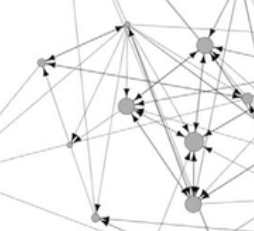Or…Creativity As A Point On A Line.
Most art forms, with the possible exception of finger painting and baking mud pies, require a great deal of technical discipline to express the artist’s creativity. Some rare people are fortunate to have an innate ability to present their art and quickly master the technical side of art; the rest of us are forced to develop our technical skills over a long period of time – to ‘pay your dues’ before mastering your art.
I like to think that artists find themselves balanced somewhere on a scale ranging from what I call ART to CRAFT. The ART side of the range representing the most pure creative point (what people like to call right brain activity) and the CRAFT side representing the the most technical point (left brain). We all fall somewhere in between these two points; hopefully striving for a balance between them.
We all know artists who stereotypically fall on the far right brain-side of this gamut. They appear to create beautiful art out of the thin air, almost magically. They’re ‘in touch with their muse’, break away from convention and can be visionary. On the negative side, sometimes they can be flaky, their productivity can be erratic and emotions can rule their temperament . Of course, I’m dealing in generalities here and conceptualizing about the extreme end of the range.
And, we all know artists, let’s call them craftsmen or artisans, who fall more on the left-brain side of this range. These are the technicians who deal with the theories of their art and master the process of artistic creativity. They can deliver the goods consistently and have the ability to excel at the commerce of art, but in extreme cases can lack some of the chaotic beauty and innocence of the pure artist.
So we will find ourselves somewhere in between these two extremes of ART and CRAFT, and being human, we will find that we have a tendency towards one end or the other. I know that I lean more towards the CRAFT side, finding joy in the intricacies of the technical side of music production and the discipline of mixing songs and guitar playing. I actually like to read the manual. Strange, I know. But I also have a good dose of pure creative spirit, and often find myself frantically trying to find pen and paper to jot down a musical idea or lyric that appeared, seemingly, out of nowhere.
So, where are you on this scale? As Socrates said, “Know Thyself”.
There are benefits to understanding your strengths and weakness; primarily in dealing with other artists. If you are a musician in a band, you can multiply your strengths by the number of members in your band and greatly diminish the weaknesses by coming to terms with them. Your collaborators should be able to help you with parts of the creative process that you aren’t particularly good at, and you can return the favor, by helping them with your creative powers. This sounds simple, but it never is. The trick is being able to acknowledge these attributes – praising the strengths without pissing off anyone when you address the weaknesses. This requires a decent level of tactfulness and compassion; traits that simply weren’t very developed in the bands of my youth. If your art requires teamwork to accomplish your goals, you will find that building strong trust and communication skills within your team will be worth it’s weight in gold – and if it doesn’t develop, it is highly unlikely that you will attain your goals at all.
So here is where I attempt a non sequitur of sorts. Please check out this quick video that I developed with Audix Microphones that was intended to help the more artistic vocalist find a little bit of their inner technician.
If you find it useful, you can delve deeper into this three part series. Big thanks to Krista Herring and her band for their assistance with this project.
dk

